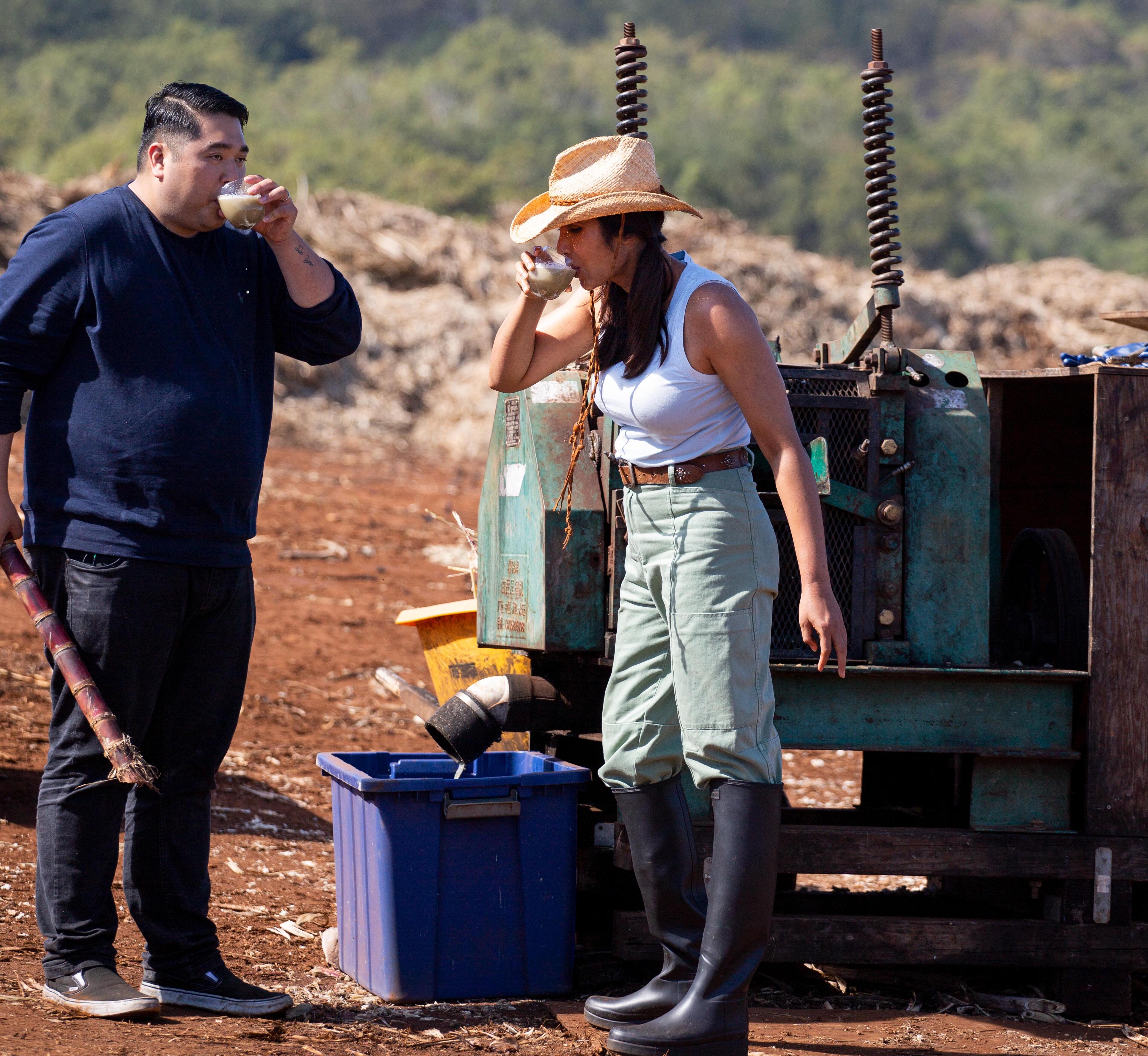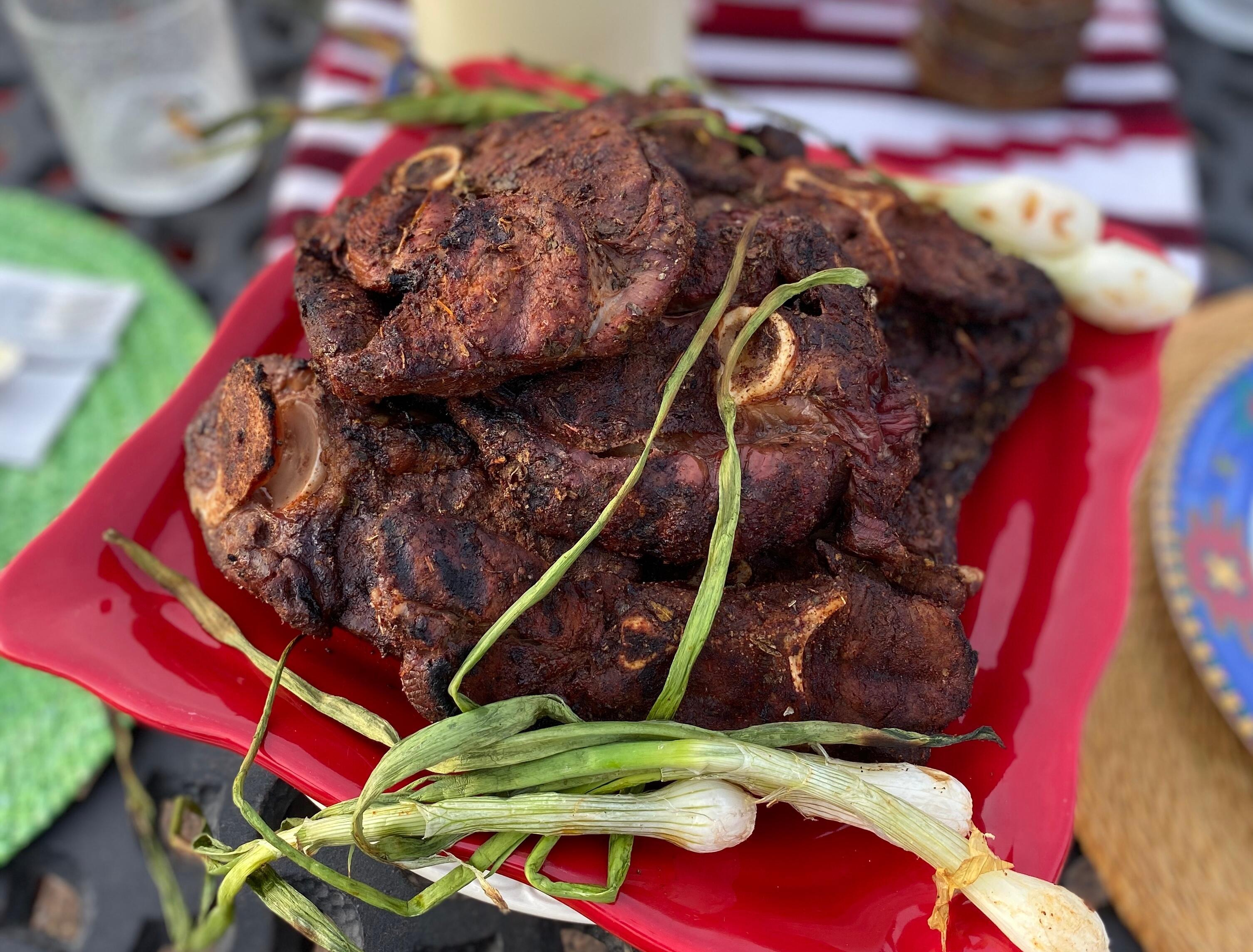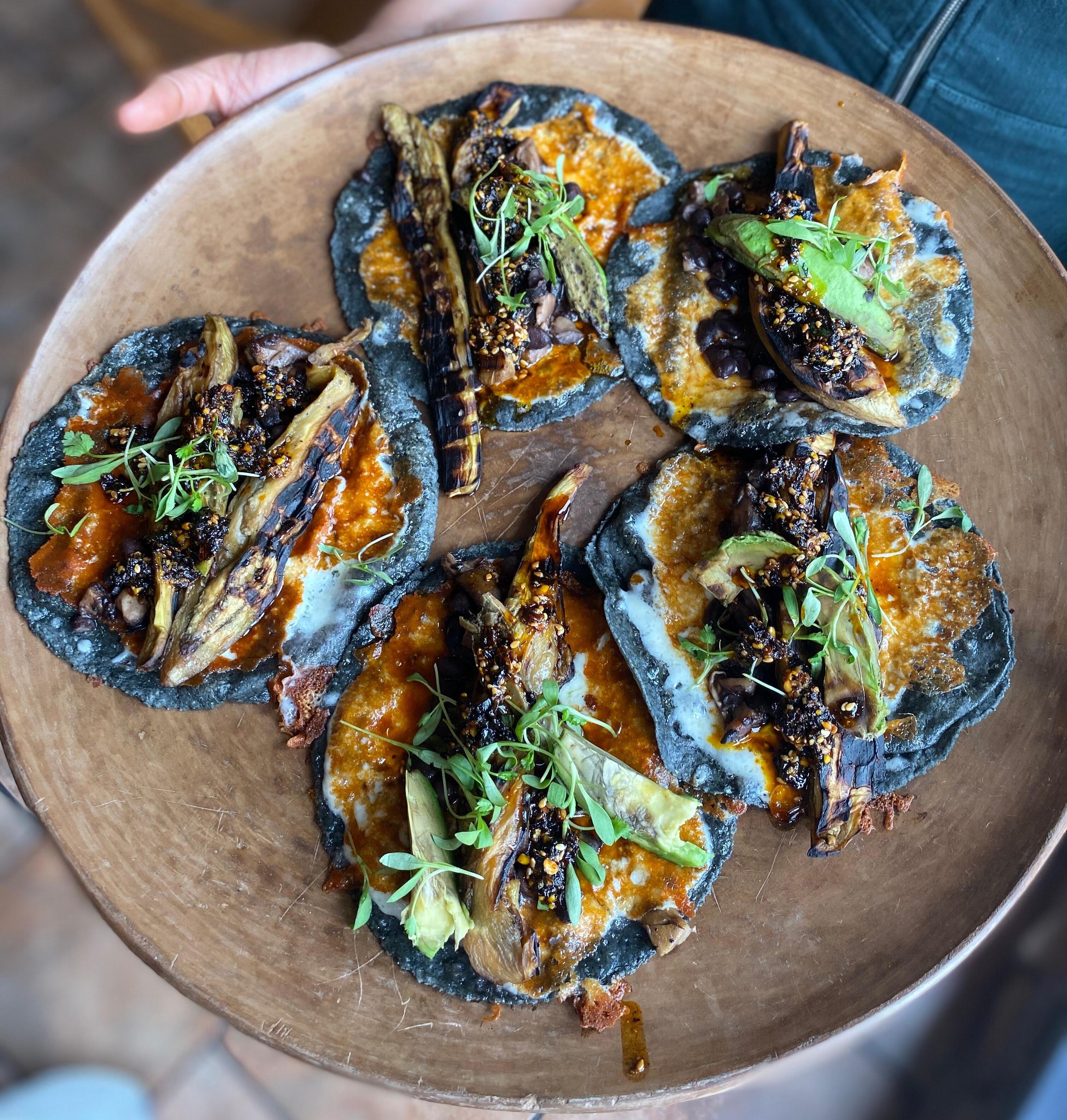More often than not, sitting down to watch a travel and food show means you’re looking for pure escapism mixed with a whole lot of #FOMO. Rarely do these shows demand more of you than letting the “next episode” countdown expire. Fluff is fine, of course, but to pretend that the vast majority of travel and food TV is anything more than that is disingenuous. For too long, the genre has hinted at deeper themes without actually exploring them (there have been exceptions, obviously).
The issue of real depth vs. virtue signaling is where Padma Lakshmi’s new show on Hulu, Taste The Nation, rises above every other series in the genre. The show absolutely peddles in travel and food porn but it asks viewers for more than just their spare time. Lakshmi wants you to think, to care, and to throw out the bullshit you’ve been erroneously taught about the United States as a country. It’s the food and travel TV version of tearing down racist monuments.
Taste the Nation also feels like a natural evolution for Lakshmi. On the surface, the show is about immigrant cuisines in the United States and how those food cultures combine to inform the American identity. The Top Chef host is an immigrant herself. She arrived in America from India when she was only four years old. In many ways, her story — going from a poor immigrant kid raised by a single mom to one of the most recognizable names in fashion and food — is a riff on the American dream. With this show, she’s using her platform to honor the unspoken code among marginalized people to help build one another up and share opportunities.

I’m not going to lie. When I first heard the elevator pitch for this show, I was… a little underwhelmed. As an Indigenous person covering the food world, another show about “immigrant” cuisine in America really felt like more of the same. Whether overtly stated or not, almost every food and travel show over the past 20 years has been about America’s immigrant food scene. I thought to myself, “What’s really new to say there?”
When I found myself in tears at the end of the eighth episode, I realized just how wrong my assumptions had been. Lakshmi and her team have gone deeper in their exploration of migrant cuisines than any other show I’ve ever seen (and I’ve seen a lot). In episode one, “Burritos at the Border,” the host dives into the world of Mexican food in El Paso, Texas. The show takes a very candid look at how the humble El Paso burrito is a cornerstone of Mexican “immigrant” cuisine in the city and how that community is part of the city’s foundation. But Lakshmi goes further — doing something I’ve never seen in a food show before. She pivots and talks with chef Emiliano Marentes about Indigenous Mexican cuisine.
So much of what most Americans consider “Mexican” food is the fusion of European foodstuffs (wheat, beef, pork, chicken, dairy, etc.) with Indigenous Mexican ingredients and techniques (corn, avocado, squash, beans, chilis, cacao, adobo, barbacoa, etc.). Padma and Marentes help unpack that for a mainstream audience.
That segment serves as a tee-up to episode eight, called “The Orignal Americans.” In that episode, Lakshmi travels to the Southwest to learn about Indigenous American food from actual Indigenous Americans. There’s no white celebrity chef white-splaining what “American” food is. There’s no pretension about these foods being “exotic” or “weird” or “foreign.” The episode opens with podcaster Andi Murphy laying down the reality of fry bread and only goes deeper from there. In fact, there’s a level of gratitude on display that’s incredibly refreshing and passed all my personal litmus tests.
In one particularly moving scene, Lakshmi sits down chef Brian Yazzie, curandera [chef and healer] Felicia Cocotzin Ruiz, and forager and cook Twila Cassadore as the sun sets over the desert. They eat Three Sisters (the Indigenous combination of corn, beans, and squash), wild antelope, and more wild-sourced dishes from the desert that are wholly new to Lakshmi yet comfortingly familiar. The moment touches on so much of what we all love about food and travel TV but the setting and the voices feel wholly unique.
Ironically, while those foods in those particular combinations are likely a blank spot for most people across this country, they’re more “American” than just about anything else you could eat. And while I’m not from the Southwest, seeing Indigenous food given a full, uninterrupted episode is the sort of representation that Indigenous people all long for and almost never get.
So, yeah, the tears flowed.

This is the part of the article where I’m supposed to bring up a counterpoint or find some fault to wag my finger at. Well dammit, I can’t find one. This show has managed the delicate balance of being deeply familiar while also pushing the format to new heights. It does all the easy things (the FOMO, the food porn, the charm) well and it does the hard things (the cultural respect, the addition of crucial context, the non-“othering”) even better. It works as a diversion and as a teaching tool.
An episode focused on the Gullah community featuring chef and historian Michael W. Twitty dives deep into one of America’s most uniquely African cultures. An episode set in Paterson, New Jersey, offers the city’s Peruvian diaspora a moment in the spotlight — with a clear intent on making sure the history of these people’s food is kept front and center. Finally, the last episode in the season, covering Hawaiian Poke and Japanese migrants, keeps things realer than real. Never once does Lakshmi pretend that Indigenous Hawaiians don’t exist and she speaks frankly about Japanese migration to the island.
After watching each episode twice, I realized why this show is so different. Lakshmi doesn’t talk to white celebrity chefs who ride trends of Peruvian or Hawaiian or even Italian cuisines for a profit with no real cultural connection to those foods. She’s not interested in fusions or foams. She goes straight to the source of each foodway, never picking guests based on how much or how little they’ve profited from their cultures. Watching her, I realized that even in shows I really enjoy, like The Chef Show or Ugly Delicious, the chefs you see cooking many of the multi-cultural foods are white celebrity chefs. Now that Taste the Nation has entered the canon, I feel a certain soullessness to some of those segments now.
What Lakshmi has done with this series is take the time to talk to the people for whom food was never a trend they could ride to fame and profit. She’s giving people space to share the dishes and techniques that form a cornerstone of their very identities; profiling the foods that bind them to their past, present, and future. The result is incredibly refreshing (and, yes, a little angering — in that it took this long for a network to wake up).
Taste the Nation feels like a step towards something bigger and better for food and travel TV. More importantly, it feels like a show we all need right now to better understand who we are as a country. A key to helping us unlock both the unique and the shared aspects of the American identity.
All Ten Episodes of Taste The Nation Will Be Available On Hulu Streaming On June 18th, 2020.








